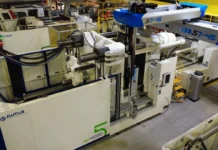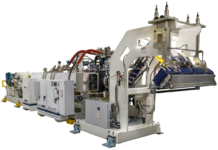Harbour Results, Inc. (HRI), a leading manufacturing industry consulting and benchmarking company based in Southfield, Michigan, recently released the results of the Q1 2021 Harbour IQ Manufacturing Pulse Study. The analysis indicates that 2020 was a challenging year for small- to medium-sized manufactures with 25% of respondents indicating they would have broken even or lost money without government funds (Paycheck Protection Program [PPP] or Canada Emergency Wage Subsidy [CEWS]). Additionally, the overall industry is optimistic for 2021 with sentiment reaching 2019 levels of optimism, tool and die utilization rebounding to 80% in Q1 2021 from an all-time low of 63% and production utilization grew from 39% in Q2 2020 to 60% in Q1 2021.
“The industry seems to be rebounding in 2021 after a difficult 2020 – sentiment is up, capital spending is planned and utilization has increased, all pointing to a healthier industry,” said Laurie Harbour, HRI president and CEO. “Although this is positive news for manufacturers, there is a great deal of room for improvement as efficiency is declining, overall revenue fell, and profitability was achieved through PPP and CEWS.”
According to study respondents, access to labor remains the top concern for manufacturers followed by raw material pricing and employee health. Additionally, for the tooling industry backlog has stabilized, work on hold is down and payment terms and on-time payments of accounts receivables have returned to pre-COVID-19 levels. Most manufacturers across all processes are planning for capital investment of 3% or more from 2021-2023.
The study focused on manufacturer’s financial performance, and last year profitability dropped an average of 6.8% in tooling and 4.2% for production. However, because of PPP and CEWS funding, the industry did not appropriately adjust headcount to better manage workload and optimize profits. Furthermore, study responses indicate that while COVID-19 hit many industries hard, declining profitability has been trending since 2016.
“Thanks to the economic growth of the last decade, owners in this industry have used their proceeds to pay down debt and invest in the business,” Harbour said. “The average debt/equity for most of the respondents is 0.5 or less. There was a time in memorable history when the averages were over 1.”
Looking ahead, 2021 will continue to be challenging for the manufacturing industry. Numerous headwinds, including supply chain shortages; increased cost of business – corporate tax rate, minimum wage and raw material prices; uncertainty with tariffs; and talent shortages will create inconsistency for many shops.
“Now is the time to gather market intelligence, focus on efficiency and improve your sales processes to create a niche that customers will pay for to create a sustainable and profitable business,” Harbour said.
The survey population was comprised of more than 300 facilities, including mold shops (23%), plastic processors (27%), stamping/metalformers (29%) and die builders (10%). Shops with revenue ranging from less than $5 million to more than $40 million were represented, with the largest percentage of shops (28%) coming from the $10-$20 million range.
For more information, visit http://www.harbourresults.com/.





